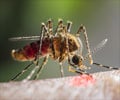The assessment of children affected with Zika virus infection can help health professionals design personalized treatment.

‘The neurological delays highlighted in Zika-infected children have significant developmental differences in the social context.’





Although zika is usually asymptomatic, research has shown a link between this disease and the development of neurological complications such as Guillain-Barré syndrome and meningitis in adults, and congenital malformations such as microcephaly in newborns.
However, cases of zika and congenital zika syndrome did not spread throughout Brazil but were reported mostly in the Northeast region.According to the Ministry of Health, 3,423 babies were born with congenital zika syndrome between 2015 and 2020, and about 2,900 were still alive last year, but only 56.4% were receiving specialized treatment.
The first study involved 42 infants aged between 24 and 40 months with congenital zika syndrome, a group of birth defects associated with infection by zika virus during pregnancy.
In general, these children had severe cerebral palsy (characterized by muscle stiffness, contraction, and spasms, typically requiring the use of a wheelchair) and significant cognitive, linguistic, and neurological impairment.
However, researchers captured clear differences in neurological development, such as varying ability to respond to external stimuli, using two assessments: the Hammersmith Infant Neurological Examination (HINE); and the third edition of the Bayley Scale of Infant Development (Bayley-III).
Advertisement
The study also showed that larger head circumference was associated with higher cognitive and motor scores. The infants in the study sample had head circumferences under 31.9 cm for boys and 31.5 cm for girls. These are the parameters established by the World Health Organization (WHO) to detect suspected cases of microcephaly.
Advertisement
Although the study sample was small, it provided a good opportunity to investigate the evolution of microcephaly a few years after birth.
In another study reported by the same researchers, food insecurity and low levels of educational attainment were influential social factors affecting the risk of zika infection for pregnant women.
The study involved 469 pregnant women, 61% of whom tested positive for zika during the 2015-16 outbreak in Salvador. The researchers analyzed demographic, socio-economic, and clinical data for the subjects, and measured exposure to zika using a virus neutralization test.
The findings help identify risk factors that can be targeted by future interventions to reduce the impact of zika on vulnerable members of society.
To glean a better understanding of the differences between these children and identify early interventions, which will reduce the disease burden.
Source-Medindia









